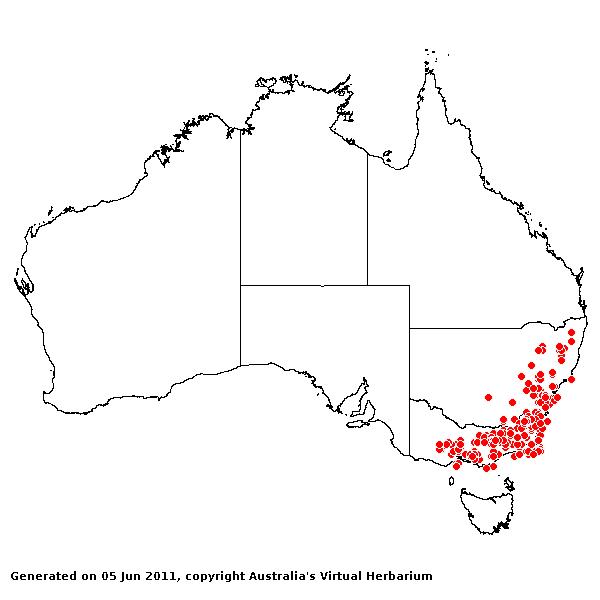Rytidosperma pallidum (R. Br.) A.M.
Humphreys & H.P. Linder. Ann. Mo. Bot. Gard..
Classification. (GPWG 2001) : Subfamily Danthonioideae. Tribe
Danthonieae.
Basionym and/or
Replacement Name: Danthonia
pallida R. Br., Prodr. 177 (1810).
Type of Basionym or
Protologue Information: HT: R. Brown 6232, Australia (BM; IT: K).
Recent synonyms: Chionochloa pallida, Notodanthonia pallida,
Joycea pallida (R. Br.) H.P. Linder
Key references
(books and floras): [1810]. R.Brown, Prodromus (177 as Danthonia
pallida), [1878] G.Bentham, Flora Australiensis 7 (592 as Danthonia
pallida, 593 as Danthonia robusta), [1952] C.A.Gardner, Flora of
Western Australia 1 Gramineae (57 as Danthonia pallida),
[2005] K.Mallet (ed.), Flora of Australia 44B: Poaceae 3, [2008]
S.W.L.Jacobs, R.D.B.Walley & D.J.B.Wheeler, Grasses of New South Wales
(288).
Illustrations:
[1952] C.A.Gardner, Flora of Western Australia 1 Gramineae (55,
Pl.14 as Danthonia), [2005] K.Mallet (ed.), Flora of Australia 44B:
Poaceae 3 (Fig. 8, A-F), [2008] S.W.L.Jacobs, R.D.B.Whalley &
D.J.B.Wheeler, Grasses of New South Wales, 4th edn (288).
Habit.
Perennial. Culms 32–160 cm tall, 3–4 -noded. Ligule a fringe of hairs, 1–6 mm
long. Leaf-blades filiform, involute, 20–40 cm long, 2–3 mm wide.
Inflorescence.
Inflorescence solid, a panicle. Panicle lanceolate, 8–35 cm long.
Spikelets.
Spikelets pedicelled. Fertile spikelets many flowered, with at least 2 fertile
florets (2–6), comprising 2–6 fertile floret(s), with diminished florets at the
apex, cuneate, laterally compressed, 8–19 mm long.
Glumes. Glumes
similar, thinner than fertile lemma. Lower glume lanceolate, scarious, much
thinner on margins, without keels, 1–5 -nerved. Upper glume lanceolate, 8–17 mm
long, scarious, without keels, 5 -nerved. Upper glume surface asperulous.
Florets.
Fertile lemma 3–11 mm long, without keel, 11 -nerved. Lemma surface indumented.
Lemma apex lobed, awned, 1 -awned. Median (principal) awn from a sinus,
7–11(–16) mm long overall, with a twisted column. Column 2–6 mm long. Lateral
lemma awns absent. Palea 2 -nerved. Lodicules present. Anthers 3. Grain 2.2–2.5
mm long.
Continental
Distribution: Australasia.
Australian
Distribution: New South Wales, Victoria.
New South Wales:
North Coast, Central Coast, South Coast, Northern Tablelands, Central
Tablelands, Southern Tablelands, North-Western Slopes, Central-Western Slopes,
South-Western Slopes, South-Western Plains. Victoria: East Gippsland,
Eastern Highlands, Gippsland Plain, Grampians, Midlands, Otway Plain, Otway
Range, Riverina, Snowfields, Volcanic Plain.
Notes.
Extensive variability in the width of the leaves, the size of the tussocks, and
the size of the spikelets.
Ranging from the New
England tablelands to north-eastern Victoria, altitude 0–1000 m (rarely in the
alpine or subalpine regions), often locally dominant on poor soils in woodland,
also invasive on pastures in the southern Tablelands. Flowers Oct. to Dec.






